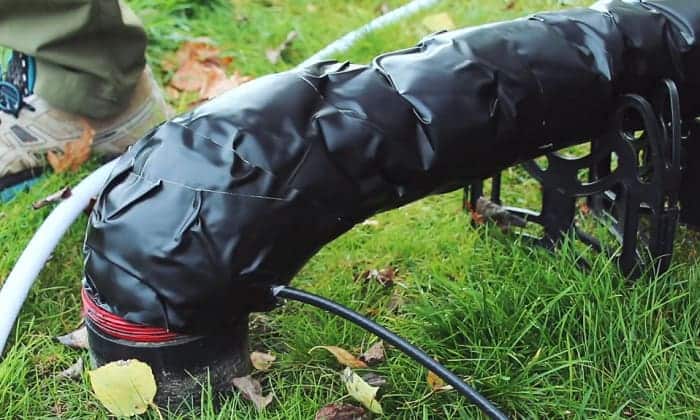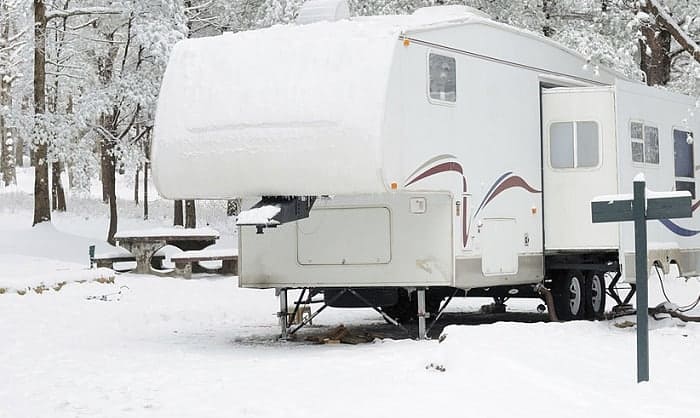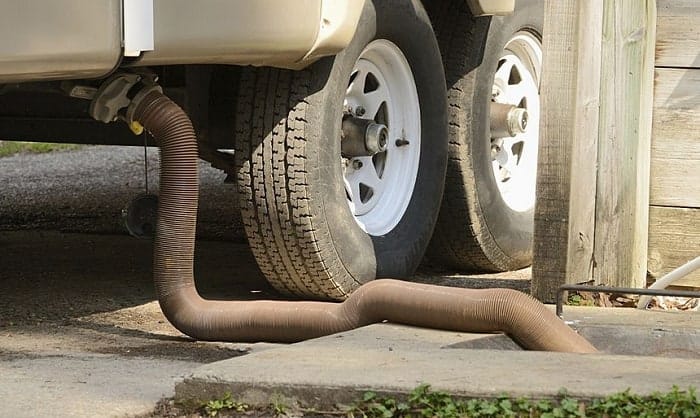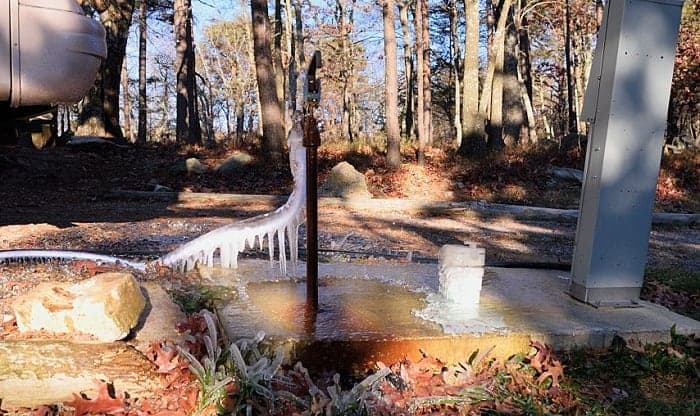Imagine how problematic it could be being in a vacation somewhere beautiful and having a clogged RV sewer due to frozen hose? The fun would surely stop, and you’d be frantic in finding a fix. This is why you must know how to keep RV sewer hose from freezing, especially if you are traveling in cold locations.
RV hoses are designed for warm climates and known to incur problems once the temperature starts dropping. The plastic material undergoes thermal shock, resulting in cracking. Problems are known to emerge after that, particularly under freezing. In this article, we will be teaching you how to keep your RV sewer hose from freezing.
Table of Contents
Items Needed
Before knowing the specific steps, you must first prepare the following materials and tools:
- Insulation material
This will make sure your plastic hose does not conduct as much cold as it can get. Insulations are additional layers placed on top of the tube to help deter the conduction of heat. Insulation foams will do for this experiment.
- Measuring tape
This tool helps you to measure the hose length to come up with how much insulation material you will buy.
- Heat cable
Heat cable helps you to supplement heat to your hose. You can help secure this tool from hardware or camping stores. Heat cables are helpful, especially in colder regions reaching 0 degrees C.
- Duct tape
This will help you attach your heat cable parallel to your hose.
- Insulation tape
This will aid you to adhere to the parts and set-up to the hose. Insulation tape should be compatible with the materials used in the set-up.
- Power supply
This will supplement your heat cable to provide power for heat supply. Insulations would not work efficiently by themselves, but also thawing will be made easy using heat.
- Freshwater supply
This will flush out the clogged remnants within your hose such that new flux of fluid would freely flow out of the system and the house.
- RV pump
This will help push the water supply unto the hose. The pressure gradient is known to govern the proliferation of a pump, regardless of the types.
Step-by-step Instructions
Here are the steps on how to Keep your RV sewer hose from freezing:
Step 1: Measure the Materials
Lay down your hose to prepare yourself for the measuring process. Make sure the hose lays flat and straight for accurate measurement. Using a measuring tape, get the length from the water supply to the tip of the hose. Record the length of the insulation material needed for purchase.
Step 2: Tape of Heat Cable
Retrieve the heating cable you have secured in prior. Tape the heating cable parallel to the hose using the duct tape purchased at around 1-foot length.
Wrap tightly so that the heating cable stays in place. Also, it is vital to avoid the coiling of the wire as this will impede heat flow and damage to the set-up.
Step 3: Cover with Insulation Material
Wrap the insulation material around the hose. The length of the material should now match with the length of the hose. Make sure all the area of the hose is covered for efficient insulation.
Use insulation tapes to put the insulation layer in place and prevent heat from traveling outside the set-up—tape at all parts of the insulation layer such that they will not be left flanging around.
Step 4: Connect the Heat and Water Supply
Once the set-up is ready, plug the heating cable into the power supply to initiate the heating process. Give a reasonable time for the heating process to carry out.
The end of the hose shall be attached next to your water supply. Make sure the supply is also connected to the pump to help push fluid. Allow the water to flush out the remnants inside the hose.
Take ample time to synchronize the heating process from the cable and flushing procedure brought about by the water supply to make the hose free-flowing again.
Along with the problem of RV sewer clogging is the problem of RV toilet holding tank clogging. Read this article if you have clogged RV toilets holding tank yet. Besides, we also recommend using RV toilet paper or Septic safe for perfect trips.
This video will help you visualize this step by Wanderful Revolution:
Final Thoughts
Clogged RV sewer hose is the last thing an RV owner should worry about during vacation. This problem is primarily known to happen under cold weather.
Although it is inevitable to happen, you can take proactive steps on how to make sure the dumping process of your sewage waste becomes convenient. Through your own initiative, you can supplement insulation and heat supply to your hoses to deter the conduction of cold temperatures to your hose and your fluid inside.
Let us know what you think of the tutorial mentioned above and share this article if you find it helpful.

Hi, I am Tom Hank, an RV-er since 2014. Back then, I started without much help. As you can imagine, the struggles are endless. But now, you do not have to begin your adventures knowing next to nothing about RV lives.





